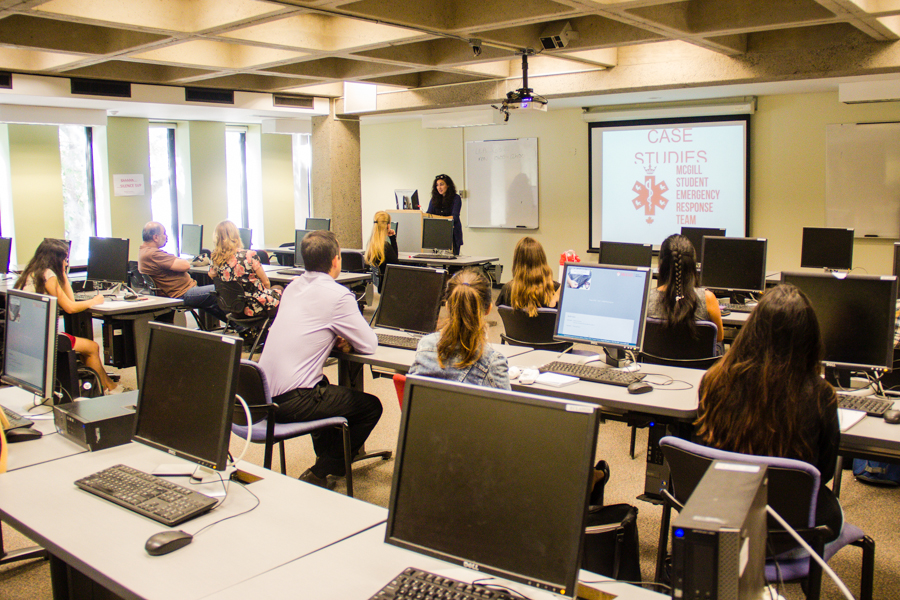Last Wednesday, Yassmin Behzadian, director of the McGill Student Emergency Response Team (M-SERT), hosted a talk as part of McGill’s Safety Week in the Redpath Library. In keeping with the week’s theme of “internal responsibility,” Behzadian focused her talk on the barriers that bystanders face when responding to emergencies, and how these barriers can be overcome.
M-SERT is a student-run organization that provides on-call emergency responders to McGill events, such as intramural hockey games, 4Floors, Frosh, and Gerts. They also provide emergency care to McGill residences every day from 6 p.m. to 6 a.m., and have office hours from 11 a.m. to 6 p.m. in room B-23 in the Shatner building where students can drop in for emergency care. Members serve, on average, 230 hours per year, or around 13,000 hours total last year, Behzadian told the crowd.
Behzadian, who has been involved with M-SERT for the past three years, said that she hoped to educate her audience on how to be helpful in an emergency situation. “In addition to providing first aid coverage, it’s also our goal to move toward a community where knowing or having first aid knowledge and acting on first aid knowledge is the norm and not the exception,” said Behzadian.
When asked by an audience member, Behzadian said that intoxication is the most common cause behind calls to M-SERT. “It starts out being intoxication, but then you find out that there are secondary injuries, so a person could be intoxicated and then they fall down the stairs.”
She added that a lot of emergencies at McGill happen during orientation. “If you’ve seen us at Frosh, you know that the majority of our calls come from that one week of insanity,” she said.
There are four major barriers that a bystander may face that could prevent them from acting in an emergency situation, Behzadian explained: fear of catching the disease, discomfort at the sight of gruesome injuries, fear of making the situation worse (and/or potentially getting sued), and the assumption that in a large group of people someone else will provide aid.
“These should not be barriers to calling 911,” said Behzadian, noting that calling does not require consent from the patient or require any direct contact with the patient.
She explained that it is quite difficult to contract an illness from helping someone if the necessary precautions are taken, such as wearing gloves and using a resuscitation mask (these items are easy to keep and transport on a regular basis). If the person’s wounds are too unsightly one should take a deep breath to calm down, and then try their best to help if they are able.
In addition, every province in Canada aside from Saskatchewan and New Brunswick has what is termed a “good samaritan law” to provide legal protection to citizens who offer help and unintentionally cause injuries, as long as they are not under the influence of drugs or alcohol.
Finally, Behzadian addressed the bystander effect, and called on individuals to feel personally responsible for the well-being of the person, even if there are other people around at the time.
“Never assume that someone is receiving care just because you see a crowd of people around them. You should always take initiative, approach the person, and see if they want or need your assistance,” she said.
“If you find out the person is already receiving care, there’s still a lot that you can do – you can be on crowd control, you can make sure that the patient is receiving their fair amount of privacy, you can call 911 if it hasn’t been been [called], there’s basically no shortage of things you can do in this scenario.”
Sacha Fyson, a McGill neuroscience student who attended the talk, said he found discomfort in the face of injury a surprising barrier to action. “I didn’t think that people would be necessarily afraid of injuries or blood or sickness and things like that,” Fyson told The Daily. “I knew about the bystander effect already, but I didn’t know that that was actually a factor inhibiting some people.”

